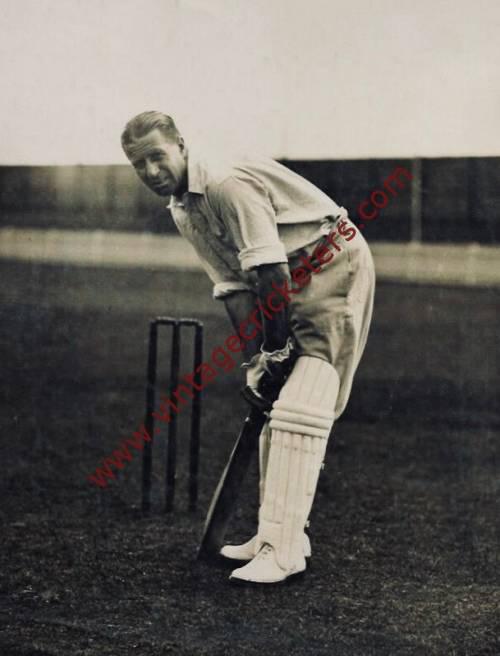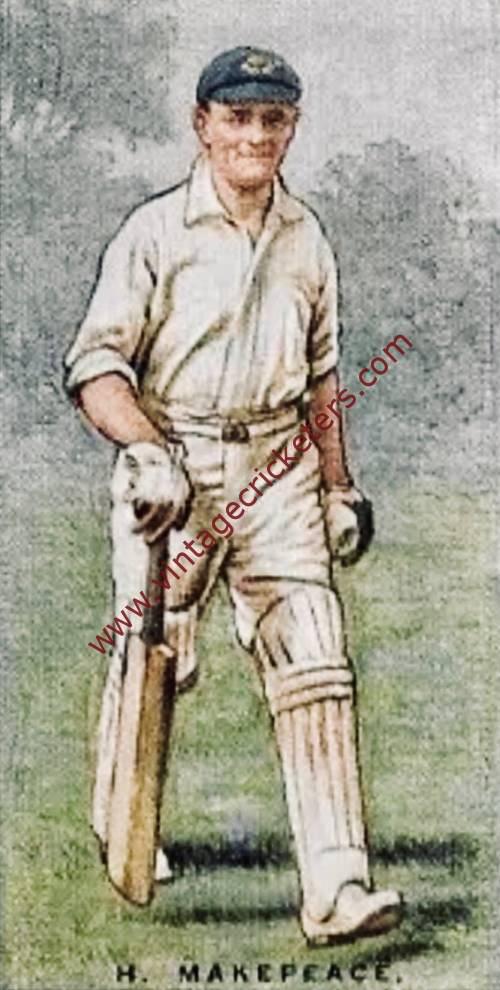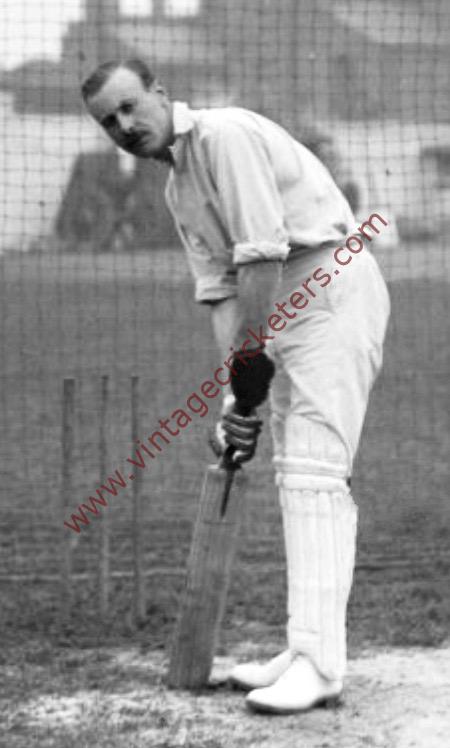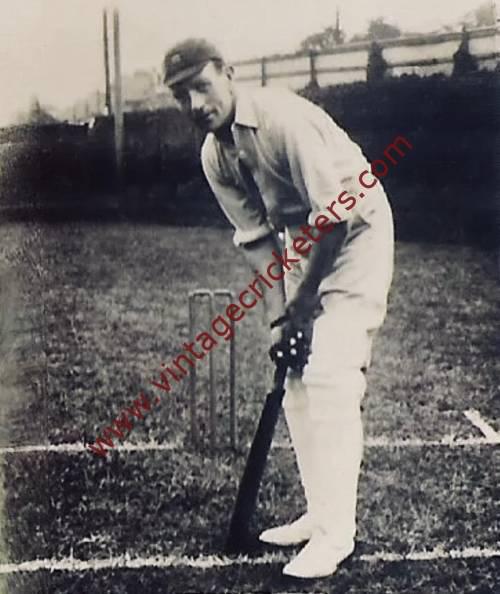Please choose your photo size from the drop down menu below.
If you wish your photo to be framed please select Yes.
Note: 16″x 20″not available in a frame.
Images can also be added to accessories. To order please follow these links
£8.95 – £49.95
Please choose your photo size from the drop down menu below.
If you wish your photo to be framed please select Yes.
Note: 16″x 20″not available in a frame.
Images can also be added to accessories. To order please follow these links
The maximum number of views of this element is reached.
Please contact the webmaster to enable unlimited views.
Worsley, Lancashire born right-hand batsman Ernest Tyldesley was younger brother of Johnny Tyldesley and remains Lancashire’s most prolific run-getter of all time, and his final total of runs and centuries in first class cricket has remained unsurpassed by any Lancashire player. Although he eventually scored more runs than his brother, indeed at a better average too, he suffered somewhat by comparison with “J.T.”, who had, of course, already performed heroically in the “Golden Age” before Ernest gained a regular place in County cricket. He had a slow start in County cricket making his debut in 1909, and though he played fairly regularly for Lancashire in the following three years, scoring his first century against Sussex in 1912, it was 1913 before he was firmly established in the team. That season he reached 1,000 runs for the first time and in 1914, the last season before the First World War put a stop to peacetime cricket, he maintained this form.
After War ended, 1919 saw Tyldesley begin to show that consistent reliability that was to characterise his many seasons in the game. jumping into the upper ranks of the top English batsmen with some solid batting, which resulted in his nomination as a Cricketer of the Year by Wisden. Though 1920 was uneven despite a score of 244 against Warwickshire, Tyldesley was already among a large crop of top class professional batsmen. 1921 saw Tyldesley make his debut in Test cricket; though he was dropped after a poor performance against Australia on a damp pitch at Trent Bridge in May, he returned at Old Trafford in July making 78 not out in his only innings, also playing at The Oval.
1922 saw him reach 2,000 runs for the first time. Tyldesley continued until injury kept him out of the last half of 1925. The 1926 season , however, saw Tyldesley scoring 50 or better in 10 consecutive innings. Despite this form, he had only played one further Test against South Africa in July 1924 and one against Australia at Old Trafford in July 1926 when he made 81 in his only innings. In 1926 he scored seven centuries in seven successive matches (four of them in consecutive innings), when Lancashire regained the County Championship after 22 years.
Tyldesley maintained his form in 1927 when Lancashire retained the County Championship, making his best Test score 0f 122 against South Africa at Johannesburg that December with a further 100 at Durban in February, and he scored 3,024 runs in 1928 at an average of 79.57, including another score of 122 against The West Indies at Lord’s in June and ten centuries in total, as he had also done in 1926, becoming the only Lancastrian to achieve the feat twice. With Tyldesley as the bedrock of their batting, Lancashire made it a hat-trick of County Championship wins. That season he also shared with Frank Watson a partnership of 371 for the second wicket against Surrey at Old Trafford, which remains the highest stand ever made in first class cricket on the ground and the record stand for any Lancashire wicket. However, he was not at his best on his only tour of Australia in 1928-29 until injury weakened England’s team at the end of the tour, playing his 14th and final Test match at Melbourne in March 1929, finishing with 990 runs in Test cricket at an average of 55.00, he highest of any player, at that time, to have completed a career of 20 innings or more.
Though never selected for the Test team again Tyldesley remained a prolific scorer for Lancashire right up to 1934, and in 1933 had the distinction of being granted a second benefit for his services to the County, though this only raised £802 as against £2,458 for his 1924 benefit. He scored his 100th first class century in a game against Northamptonshire in July 1934, in a season in which he passed 2,000 runs for the sixth time. 1935, at the age of 46, saw him again affected by injury and playing only rarely, while the following year, playing as an amateur, he only played two matches before retiring.
He made a double century for Lancashire seven times with a highest score of 256 not out against Warwickshire at Old Trafford in 1930, and twice scored a hundred in each innings of a match. When he retired in 1936 he had scored 38,874 runs at 45.46 and hit 102 centuries and 191 half centuries in 648 first class matches, also taking 6 wickets as an occasional bowler with a best performance of 3-33, and holding 296 catches in his first class career.
He later served as a member of the Lancashire committee, and in 1949 was made a life member of the M.C.C. Tyldesley’s elder brother “J.T.” named the family home in Worsley, Lancashire, “Aigburth” to commemorate his younger brother’s Lancashire debut at the Liverpool ground where Lancashire County Cricket Club occasionally play their matches. The home still stands today and a plaque telling the story has been erected by the Worsley Heritage Walks. His great-great-nephew is the Yorkshire and England cricketer and former England captain Michael Vaughan.
Vintage Cricketers was founded in July 2019. There are more photographs of this cricketer in the Vintage Cricketers library, which are due to be loaded in due course. In the meantime, please send a message to us using the contact form at the bottom left of this page and we can arrange to prepare and publish all images of this cricketer if you have a particular interest in him.
| Weight | N/A |
|---|




